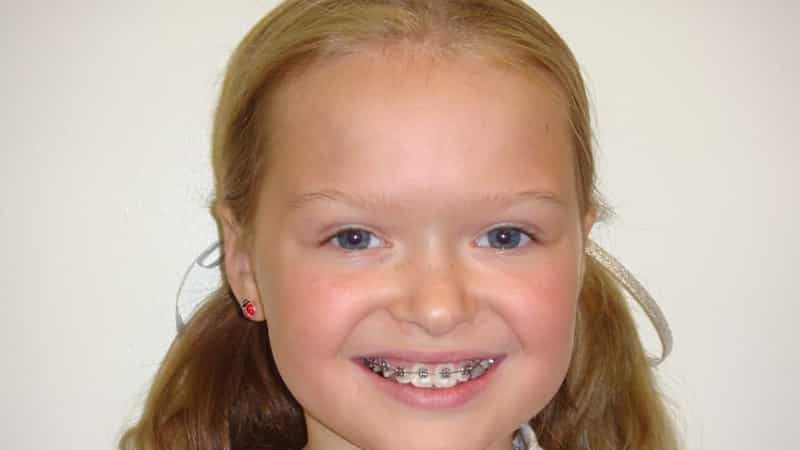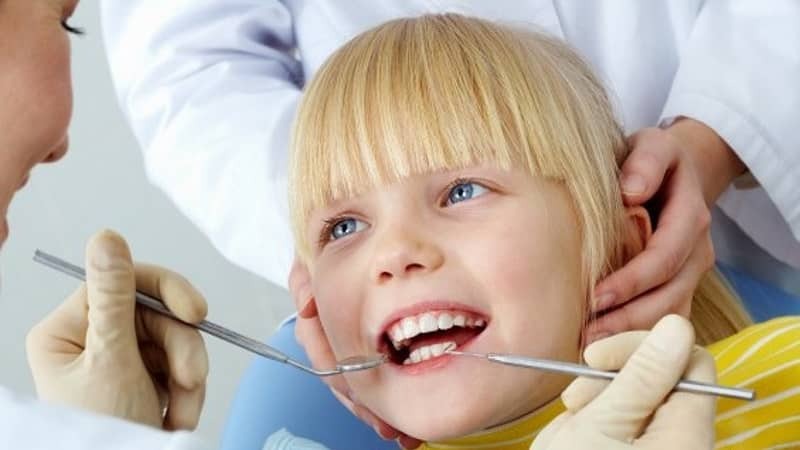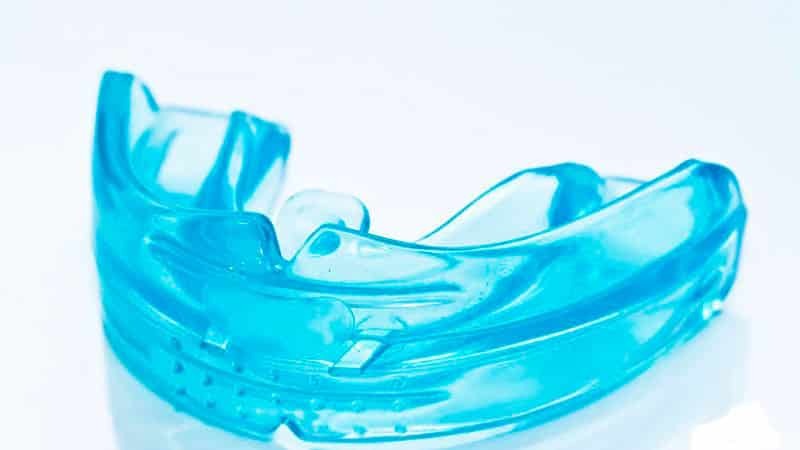Maloclusión: una foto del niño antes y después
What is an incorrect bite?This is an abnormal arrangement of teeth in the mouth.An incorrect bite has not only an external unattractiveness, but also physiological consequences in the form of digestive disturbances and early tooth decay.Bite correction is possible at any age, but is most effective in the childhood and adolescence - up to 14 years.What are the features of correction of an abnormality of an occlusion in a child and an adult?What should be the ideal bite?And what are the causes of violation of the formation of the jaw?
Types of bites: temporary, interchangeable, permanent

The dental classification of the closing of incisors, canines and molars is based on two factors: the age of the person and the location of the teeth in the jaw.According to the time factor, jaw closure is called:
- Temporary( milk) - up to 6 years( before eruption in the child of the first molar).
- Replaceable( mixed) - 6-12 years( until complete change of milk teeth).This period is characterized by maximum jaw growth and the most accelerated metabolic process.Treatment of bite anomalies at this age occurs efficiently and quickly.Correction of the occlusion is much easier than in the older age.
- Standing - after 14 years.Bite correction in this period is possible, but treatment is determined by age.The younger, the more active are the metabolic processes, the easier the crowns move in the jaw.
Correct physiological location of the teeth
The correct closure has been termed physiological.Dentists distinguish several types of normal jaw closure.They are united by one common feature - they do not form unhealthy consequences in the form of physiological disorders.External signs of normal closure:
- Symmetrical oval face with harmonious features.
- The upper crowns are located above the analogous crowns of the lower row.
- The middle line of the face coincides with the middle line between the front incisors.
Kinds of correct closure:
- Straight - the cutting edges of the teeth close together exactly.
- Orthognathic - the upper row of teeth overlaps the lower one to a small part of their height( up to 1/3 of the crown).
- Biprognatic - both rows of teeth have a slight inclination forward, to the lips, but the cutting edges are in direct contact with each other.
- Progenic - the lower jaw is slightly pushed forward, but the cutting edges of the teeth are closed.
Photo of the correct occlusion:



Incorrect bite

There are several types of abnormal arrangement of teeth in the jaw.Most of them are the result of underdevelopment of the jawbone in a child.They share a common property - gradually form violations in the digestive organs, violate the symmetry of the face.A person needs treatment, correction of bite to prevent further unhealthy consequences.
External signs of abnormal teeth closing:
- Protruding upper lip.
- The forward lower jaw.Curvature of teeth and their incomplete contact.
- Misalignment of the edges of the opposite chewing surfaces.
Types of malocclusion:
Distal - is expressed in too much development of the upper jaw and underdevelopment of the lower one.


Photo and Diagram - Distal Closure
Mesial - the lower jaw forward of the upper.

Crossed - underdevelops one of the dentition rows( either upper or lower) as a result of underdevelopment of one of the jaws, there is a displacement of one jaw relative to the other to the right or to the left.


Photo and diagram of cross closure
Open - there is a partial or complete discontinuity of the opposing teeth.


Photo and open-close circuit
Deep - the upper teeth cover the bottom considerably( more than ½ of their height).


Deep closing photo and diagram
Dystopic - displacement of one or more teeth from their normal position in the jaw.
Causes of bite anomaly
Bite dysfunction is associated with heredity, malnutrition and insufficient mechanical stress on the jaw.Here are the main unfavorable factors:
- Genetic heredity.
- Intrauterine growth disorders( lack of calcium in the period after the 20th week).
- Unnecessary use of pacifier pacifiers, thumb sucking( must be controlled by an adult).
- Artificial feeding( with the formation of muscles and jaws during the feeding, the lower jaw is smaller than the upper jaw in the newborn, their sizes are equalized with sufficient sucking load on the facial muscles).
- Mouth breathing( may be a bad habit or consequence of inflammation of the nasopharynx, adenoids).
- Too early delete.If the milk tooth falls too early, conditions are created to form an incorrect jaw closure.
- Disturbance of nutrition and micronutrient supply, deficiency or poor digestibility of calcium, fluoride.
- Metabolic disorders.
- Caries and its untimely treatment.
- Insufficient number of solid plant foods in the food( insufficient jaw load) - as a result - improper formation of jaw closure in the child.
- Dysplasia of jaw growth due to rickets( does not provide enough room for eruption).
- Chronic otitis and other ENT diseases( form irregular breathing).Jaw injuries.
Correction of an incorrect bite, its treatment depends on the age of the patient and the level of underdevelopment of the jaw.
Consequences of malocclusion in adults

Anomalies of the occlusion are expressed in the following physiological consequences:
- Paradontosis.An incorrect loading on the chewing surfaces leads to their loosening.This condition is formed by 30-40 years( depending on the degree of bite abnormality).Treatment is complex and not always successful.
- Rapid wear, chipped chewing surfaces of crowns.
- The pathology of the temporomandibular joint in the place of attachment of the lower jaw to the temporal bone.With this bite anomaly, these joints produce a "clicking" sound when the jaws open and the mouth opens.In addition, frequent headaches are formed.
- Deformation of the jaw and skewing of the face in the child.
- Defective speech in the child, and after - in the adult.
- Infringement of breath - insufficient ventilation of lungs, slowing down of metabolic processes in an organism.
- Malfunction of chewing in a child and an adult, as a result of insufficient, incomplete shredding of food, gastritis is formed.
- Violation of diction - often accompanies an open abnormal bite.
- A one-sided caries is formed in a cross-cut non-closure, in which food is chewed predominantly from one side of the mouth.
How to fix bite?
Correcting an incorrect bite takes a long time.The method of treatment is determined by the orthodontist.
What if the wrong bite was detected already in adulthood?Should I contact the orthodontist or leave it as it is?Most likely, by the age of 30 or 40, the owners of the wrong position of the teeth already have a number of GI diseases.Therefore, you need to contact the orthodontist at any age.
Correction of bite without briquettes
What if the clamping of teeth is wrong, and there is not enough money for dentistry?You can try to perform a set of special exercises.Especially effective correction of bite exercises in childhood and adolescence.Since malocclusion is associated with inadequate exercise and poor nutrition, one can refer to exercises that give a muscular load to the jaw.
1. Open the mouth with effort( the hand presses on the chin and counteracts its opening).
2. Open your mouth wide and quickly close.
3. Raise the tip of the tongue to the palate and in this position open and close the mouth.
And also daily chew hard raw vegetables( carrots, celery, pumpkin).
Also bite correction without briquettes is achieved by passive methods that do not require physical effort of the patient:
Trainers ( removable construction made of silicone for children and polypropylene for adults, is worn all over the jaw for several hours a day or overnight).

Kapi ( plastic construction, located on the jaw permanently).

Veneers ( caps or plates).90% of people have an incorrect bite.




